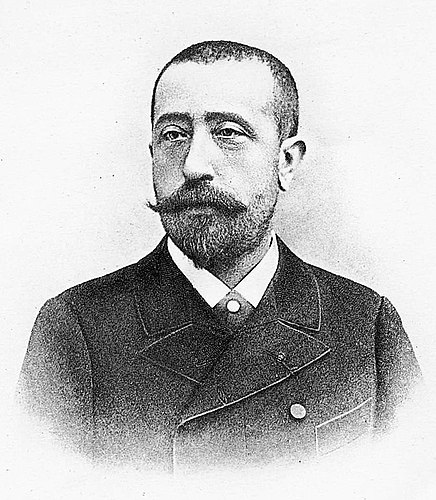By BY DAISUKE WAKABAYASHI from NYT Technology https://ift.tt/2wqLcUR
Monday, March 2, 2020
Waymo Includes Outsiders in $2.25 Billion Investment Round
By BY DAISUKE WAKABAYASHI from NYT Technology https://ift.tt/2wqLcUR
Wikipedia article of the day for March 3, 2020
 The Wikipedia article of the day for March 3, 2020 is Tourette syndrome.
The Wikipedia article of the day for March 3, 2020 is Tourette syndrome.Tourette syndrome is a neurodevelopmental disorder which begins during childhood or adolescence. It is characterized by tics (video shown) such as blinking, coughing, sniffing, or facial movements that are a somewhat suppressible response to an unwanted urge. Once considered rare, Tourette's occurs in about 1% of people under eighteen, although many go undiagnosed or never seek medical care. There is no specific test for diagnosis and Tourette's is not always correctly identified because most cases are mild. Extreme cases in adulthood are rare and Tourette's does not affect intelligence or life expectancy. Education is an integral part of management of the syndrome, and explanation and reassurance are often sufficient. The cause is believed to involve environmental and unknown genetic factors. The condition was named for Georges Gilles de la Tourette, who published an account of nine patients in 1885.
Apple Agrees to Pay Some iPhone Owners $25 Each

By BY JACK NICAS from NYT Technology https://ift.tt/3an1EEo
Silicon Valley Leaders’ Plea to Democrats: Anyone but Sanders

By BY NELLIE BOWLES AND ERIN GRIFFITH from NYT Technology https://ift.tt/3cn1H54
Can YouTube Quiet Its Conspiracy Theorists?
By Unknown Author from NYT Technology https://ift.tt/39qGs0t
Sunday, March 1, 2020
Wikipedia article of the day for March 2, 2020
 The Wikipedia article of the day for March 2, 2020 is Palmyra.
The Wikipedia article of the day for March 2, 2020 is Palmyra.Palmyra is an ancient city in present-day Homs Governorate, Syria. Inhabited since the Neolithic period, it entered recorded history in the early second millennium BC. Palmyra became part of the Roman Empire in the first century AD. Palmyrene merchants established colonies along the Silk Road and the city grew wealthy from trade caravans. Many monumental projects were erected, such as the Great Colonnade, the Temple of Bel, and distinctive tower tombs. Palmyra reached the apex of its power in the 260s, when its king Odaenathus defeated the Persian emperor Shapur I. After Odaenathus's assassination in 267, his widow Zenobia rebelled against Rome and conquered the Roman East. Palmyra was destroyed in 273 by the Roman emperor Aurelian. Restored on a smaller scale, it remained a minor trading center until it was sacked by the Timurids in 1400 and became a small village. During the Syrian civil war in 2015, the Islamic State of Iraq and the Levant destroyed large parts of the ancient city.
Intel’s Culture Needed Fixing. Its C.E.O. Is Shaking Things Up.

By BY DON CLARK from NYT Technology https://ift.tt/2PAj9cj
Subscribe to:
Comments (Atom)